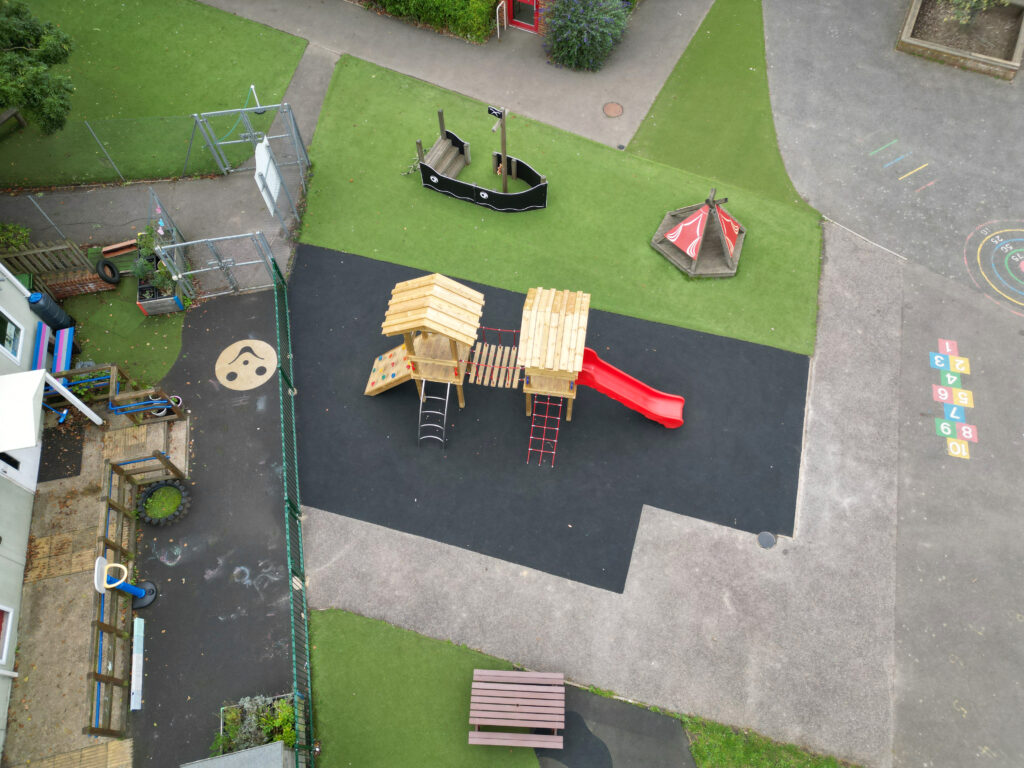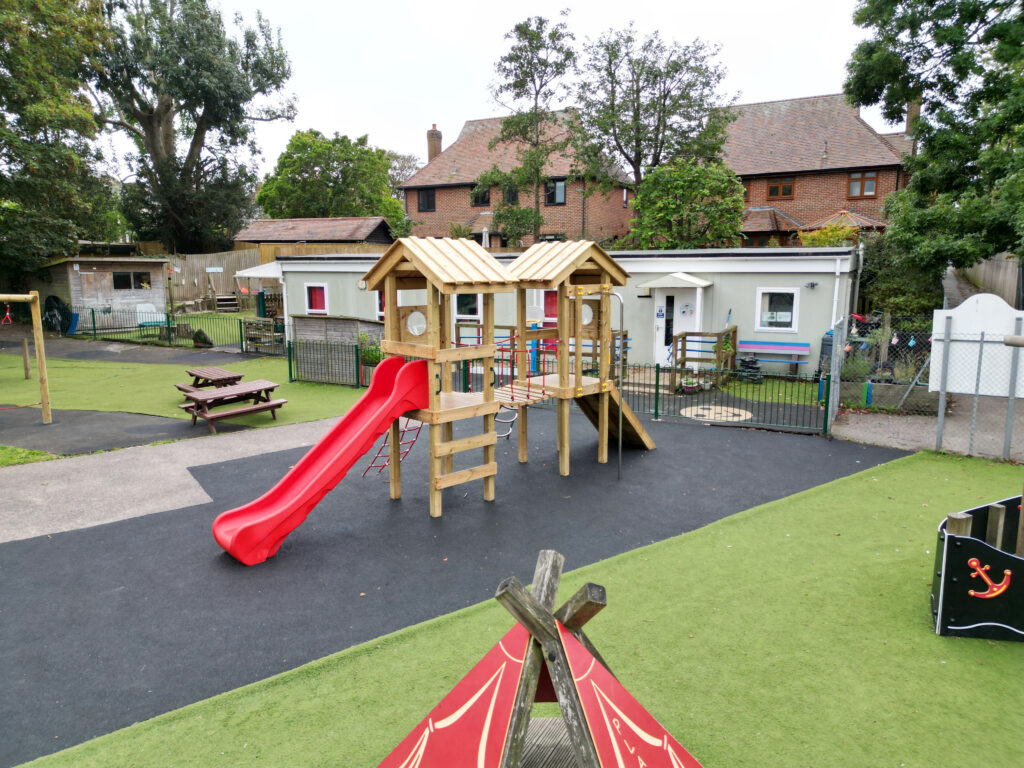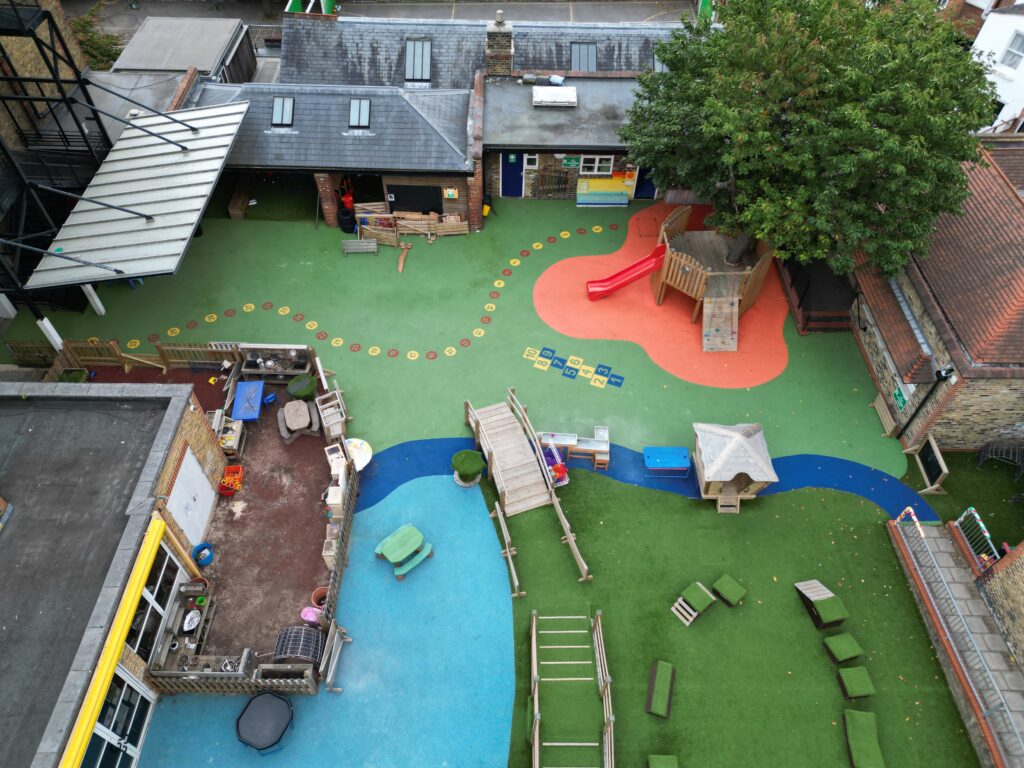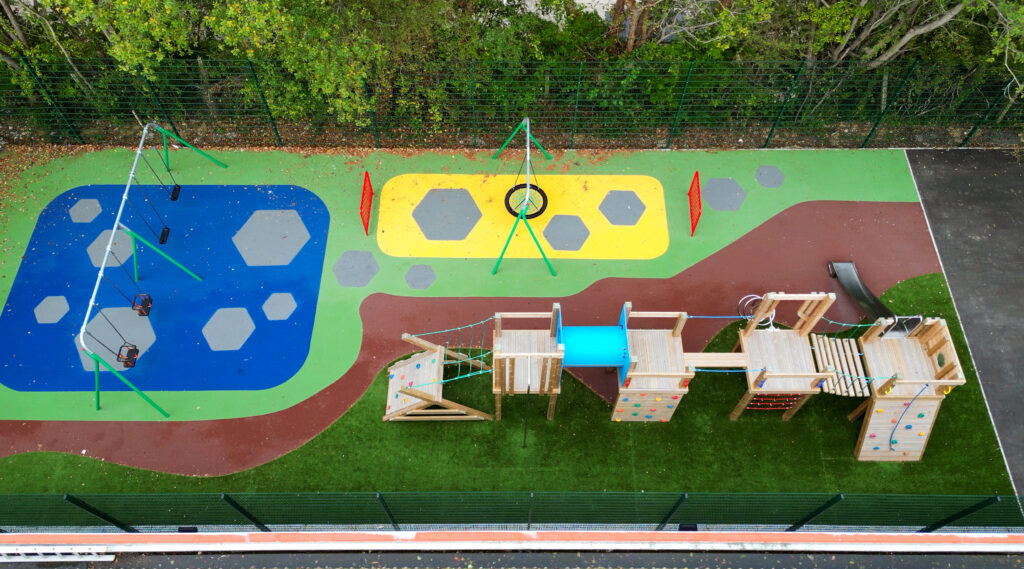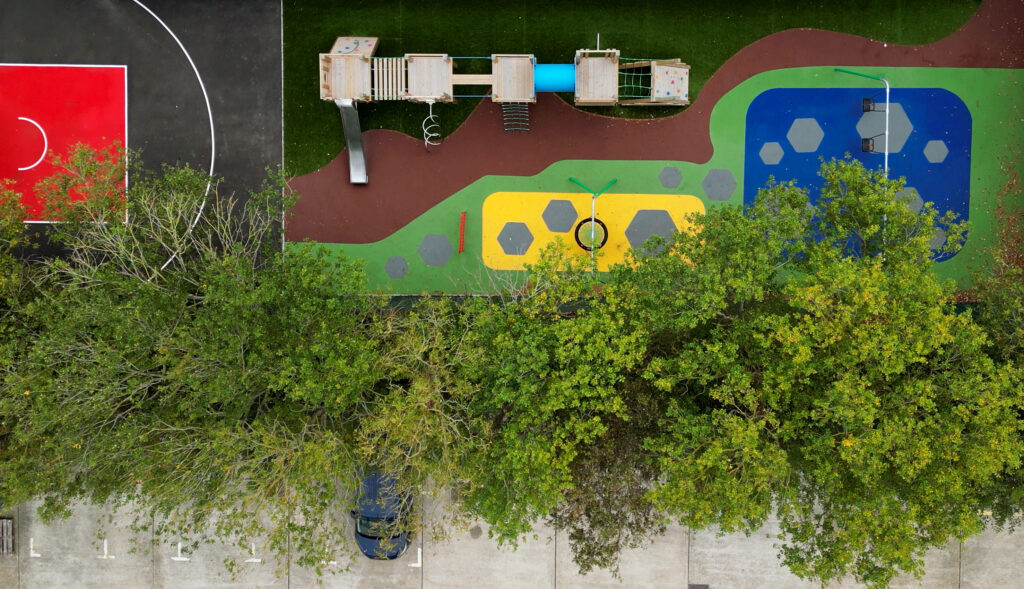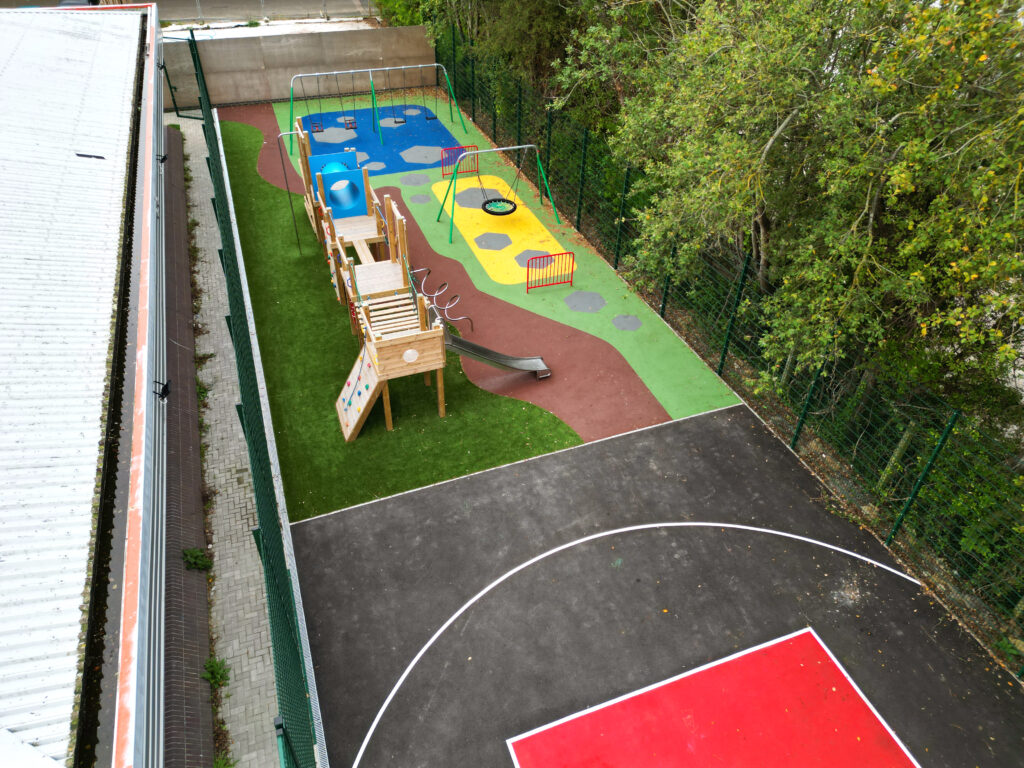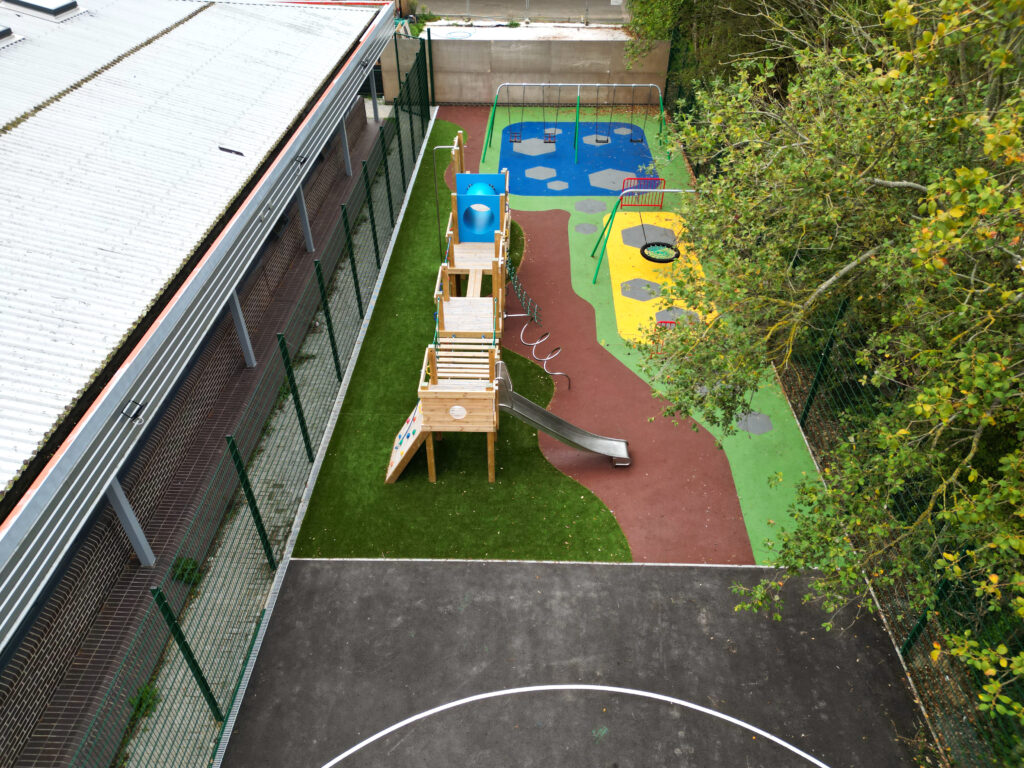Are you looking for fun and engaging ideas to spice up your primary school’s playground? Look no further! In this article, we will explore some creative and affordable ways to transform your playground into a hub of excitement and learning.
Say goodbye to boring and stagnant play spaces and hello to endless opportunities for physical and mental development. Let’s get started, shall we?
Key Takeaways:
- Playgrounds in primary schools promote physical health, academic excellence, and social development by providing space for regular physical activity, overcoming obstacles, and inspiring students.
- Designing age-appropriate playgrounds with safety measures and inclusive features can enhance children’s physical, cognitive, and emotional development. Other factors to consider include accessibility and proper maintenance.
- Playground ideas for primary schools include traditional equipment like swing sets and climbing frames, natural and sensory playgrounds, adventure playgrounds, and fitness and sports playgrounds.
If you would like to speak to our team about creating a fun and engaging playground for your primary school, please get in touch!
What are Some Playground Ideas for Primary Schools?
When it comes to creating a fun and engaging all weather outdoor space for primary schools, there are endless playground ideas to consider. Each option offers unique benefits for children’s physical and cognitive development, from traditional playground equipment to more innovative and interactive designs.
In this section, we will explore some of the most popular playground ideas for primary schools, including traditional equipment such as swing sets and climbing frames, as well as more creative options like natural, sensory, and adventure playgrounds.
Traditional Playground Equipment
When designing a traditional playground for primary schools, it is important to consider the following factors:
- Age Appropriateness: Ensure that the equipment is suitable for the age group, with options for younger and older children.
- Safety Measures: Install safety features like soft flooring, handrails, and secure swing seats.
- Inclusivity: Incorporate equipment that can be used by children of all abilities, such as inclusive swings and accessible ramps.
- Accessibility: Ensure that the playground is easily accessible for all children, including those with physical disabilities.
- Maintenance and Upkeep: Regularly inspect and maintain the playground equipment, and replace any worn-out or damaged parts.
By considering these factors, primary schools can create traditional playgrounds that provide safe and enjoyable play experiences for their students, with swing sets, climbing frames, and vibrant playground markings.
Natural Playgrounds
Natural playgrounds provide numerous benefits for primary schools, encouraging outdoor play and exploration while fostering a connection with nature. Here are steps to consider when creating a natural playground:
- Design outdoor spaces: Incorporate natural elements like trees, plants, and rocks to create a stimulating environment.
- Offer sensory experiences: Include elements like sand, water, and mud for tactile experiences that promote sensory development.
- Promote gross motor skills: Provide opportunities for climbing, jumping, and balancing to enhance physical coordination.
- Encourage imaginative play: Incorporate natural materials like logs and branches to inspire creative and imaginative play.
- Support eye-hand coordination: Include activities like digging, pouring, and building to develop fine motor skills and hand-eye coordination.
By following these steps, primary schools can create engaging natural playgrounds that enhance children’s development and provide meaningful outdoor experiences.
Sensory Playgrounds
Sensory playgrounds offer a diverse range of sensory experiences that aid in the development of eye-hand coordination and motor skills in children. To create a sensory playground:
- Incorporate a variety of textures, such as sand, grass, and rubber surfaces, to stimulate the tactile senses.
- Include equipment that engages the visual senses, such as colourful play panels or mosaics.
- Add interactive elements like musical instruments or water play features to engage the auditory and tactile senses.
- Integrate balance beams, climbing walls, and other equipment to enhance proprioception and vestibular senses.
- Ensure the playground is accessible for children with sensory disabilities, providing inclusive play opportunities.
Adventure Playgrounds
Adventure playgrounds in primary schools provide valuable opportunities for children to develop physical, social, and cognitive skills through play. Here are steps to consider when designing adventure playgrounds:
- Provide diverse, challenging equipment that encourages children to overcome obstacles.
- Incorporate imaginative playground designs that spark creativity and problem-solving skills.
- Include elements that promote spatial awareness, such as climbing structures and balance beams.
- Integrate features that enhance directional awareness, such as mazes or pathways with signage to help children navigate.
- Ensure safety measures are in place, such as soft landing surfaces and appropriate supervision.
- Consider inclusive design principles to accommodate children of all abilities.
- Maintain and upkeep the playground regularly to ensure safety and longevity.
Fitness and Sports Playgrounds
When designing fitness and sports playgrounds for primary schools, it is important to incorporate features that encourage regular physical activity. This can be achieved by installing bright sport markings on the ground to create interactive games and challenges.
Additionally, equipment such as climbing walls, balance beams, and monkey bars can be included to improve strength and coordination.
It is also beneficial to consider adding sports courts for games like basketball or soccer. These playgrounds not only provide a fun space for students, but also promote a healthy and active lifestyle.
What are the Factors to Consider when Designing a Playground for Primary Schools?
When it comes to designing a playground for primary schools, there are numerous factors that need to be carefully considered.
From ensuring age appropriateness to implementing safety measures, creating an inclusive and accessible space, and maintaining regular upkeep, each element plays a crucial role in designing a successful playground.
In this section, we will delve into the key factors to keep in mind when designing a playground for primary schools, including age appropriateness, safety measures, inclusivity, accessibility, and maintenance and upkeep.
Age Appropriateness
When designing a playground for primary schools, age appropriateness is crucial to ensure the safety and engagement of young children. Here are some steps to consider:
- Identify the age range of the students using the playground.
- Select equipment that promotes motor skills development, such as climbing structures and balance beams.
- Incorporate activities that engage cognitive skills, like puzzles or interactive panels.
- Design spaces that encourage hand-foot coordination, such as hopscotch or jumping areas.
- Regularly assess and update the playground to ensure it remains age-appropriate.
Age-appropriate playgrounds can foster the holistic development of children, including their physical, cognitive, and social skills. These playgrounds also provide opportunities for children to improve their hand-foot coordination through activities like hopscotch and jumping areas.
Safety Measures
Ensuring safety measures in primary school playgrounds is crucial to protect children and prevent injuries. Here are some steps to consider:
- Surfacing: Use impact-absorbing materials like rubber mats or wood chips to cushion falls.
- Equipment maintenance: Regularly inspect and repair playground equipment to ensure it is in good working condition.
- Age-appropriate equipment: Install equipment suitable for different age groups to minimise the risk of accidents.
- Supervision: Assign trained staff or volunteers to supervise children and enforce safety rules.
- Clear guidelines: Display clear instructions and rules for safe play, including guidelines for eye-hand coordination activities.
Inclusivity
Creating inclusive playgrounds in primary schools is essential for fostering a sense of belonging and equal participation among all students. Consider the following points:
- Consult with experts: Seek advice from occupational therapists, educators, and parents to understand the specific needs and requirements of students.
- Accessible equipment: Install ramps, wheelchair-accessible swings, and sensory play elements to ensure children of all abilities can engage in play.
- Inclusive activities: Incorporate games and activities that promote cooperative play, teamwork, and social interaction among students.
- Multi-sensory experiences: Design play areas that stimulate different senses through textures, sounds, and colours to accommodate children with sensory sensitivities.
- Visual cues: Use clear signage, visual aids, and symbols to support communication and navigation for children with hearing or visual impairments.
Inclusive playgrounds promote physical activity, social integration, and self-esteem among primary school students, positively impacting their overall development.
Accessibility
Ensuring accessibility in playground designs for primary schools is crucial to create an inclusive outdoor space that promotes spatial and directional awareness. Here are factors to consider when designing an accessible playground:
- Include wheelchair-accessible ramps and pathways throughout the playground to aid in directional awareness.
- Install playground equipment that accommodates children with mobility impairments, such as accessible swings or transfer platforms, to promote spatial awareness.
- Provide clear signage and visual cues to aid children with visual impairments in navigating the playground and promoting directional awareness.
- Incorporate sensory elements like textured surfaces or auditory features to engage children with sensory disabilities and promote directional awareness.
- Implement inclusive seating areas and shaded spaces to cater to children with diverse needs and promote directional awareness.
By following these steps, primary schools can ensure that their playgrounds are accessible and promote inclusivity for all children, including those with directional awareness needs.
Maintenance and Upkeep
Maintaining and keeping a playground in good condition is crucial for the safety and enjoyment of primary school students. Here are some steps to ensure proper maintenance and upkeep:
- Regular inspections: Conduct routine checks to identify any damaged or worn-out equipment, such as swing sets or playground markings.
- Repair or replace: Promptly repair or replace any broken or unsafe equipment to prevent accidents and promote a safe environment.
- Cleanliness: Keep the playground clean by regularly removing debris, trash, and leaves.
- Ground surface maintenance: Maintain a safe ground surface by regularly inspecting and repairing any uneven or damaged areas. Consider using bright sport markings to enhance the play experience.
- Promote physical activity: Encourage regular physical activity by providing ample space and equipment for children to engage in active play and incorporating tabletop games or other interactive elements to enhance the play experience and promote creativity and imagination.
Why are Playgrounds Important for Primary Schools?
Playgrounds are essential for primary schools as they contribute to physical health and academic excellence. They offer opportunities for children to engage in physical activities, promoting fitness and overall well-being.
Playgrounds also provide a platform for children to overcome obstacles, enhancing their problem-solving and social skills.
Schools recognise the importance of play and incorporate it into their curriculum to create a holistic learning environment.
Physical education programs in primary schools help develop motor skills, coordination, and teamwork among students, fostering a positive and active school culture.
What are the Benefits of Having a Playground in Primary Schools?
A playground is not just a place for young children to have fun and burn off energy – it is also a crucial component of their overall development.
In this section, we will discuss the multitude of benefits that having a playground in primary schools can bring. From physical development and social skills to emotional and cognitive growth, playgrounds provide a dynamic and interactive outdoor space for children to learn, explore, and play.
Physical Development
Physical development is a crucial aspect of a child’s growth, and playgrounds play a significant role in promoting it.
- Engage in regular physical activity: Encourage children to participate in activities that promote physical health and fitness.
- Develop gross motor skills: Provide opportunities for children to engage in activities that involve large muscle groups, such as climbing, running, and jumping.
- Enhance spatial and directional awareness: Playground equipment like slides and obstacle courses help children understand space and navigate their surroundings.
- Promote hand-foot coordination: Activities such as swinging, climbing, and playing catch improve hand-eye coordination and balance.
Social Development
- Encourage group play: Provide opportunities for children to engage in cooperative games and activities that promote teamwork and collaboration.
- Promote social interaction: Design the playground layout to facilitate interactions among children, with spaces for conversation and group play.
- Foster inclusivity: Ensure that the playground equipment and activities are accessible to children of all abilities, allowing them to play and interact together.
- Develop conflict resolution skills: Encourage children to resolve conflicts and negotiate with their peers during play, helping them learn important social skills.
- Facilitate imaginative play: Include play elements that inspire creativity and imagination, such as themed play structures or open-ended play areas for make-believe games.
Pro-tip: Incorporate playground games that involve overcoming obstacles, like obstacle courses or scavenger hunts, to promote social development and teamwork.
Emotional Development
Emotional development is crucial for children and can be fostered through playground activities. Here are steps to promote emotional growth in primary schools:
- Encourage cooperative play: Group games and activities help children develop empathy, teamwork, and conflict resolution skills.
- Provide opportunities for self-expression: Artistic activities, such as drawing or role-playing, allow children to express their emotions and develop self-awareness.
- Promote social interaction: Organise activities that encourage children to interact with their peers, helping them develop social skills and build friendships.
- Create a safe and inclusive environment: Ensure that the playground is a welcoming space for all children, promoting a sense of belonging and acceptance.
- Foster resilience: Provide challenges and opportunities for children to take risks and learn from their experiences, building resilience and decision-making skills.
Consider incorporating elements like expressive art stations and quiet reflection areas to enhance emotional development in primary school playgrounds. By creating an environment that supports emotional growth, children can develop strong emotional intelligence and well-being.
Cognitive Development
Engaging in cognitive development activities on the playground can enhance children’s critical thinking, problem-solving skills, and overall academic excellence. Here are some steps to foster cognitive development in playground design:
- Incorporate bright sport markings and playground markings to encourage strategic thinking and planning.
- Install diverse playground equipment like swing sets, climbing frames, and tabletop games to stimulate problem-solving abilities.
- Create sensory experiences through unique playground designs, providing opportunities for imagination and creativity.
- Encourage physical exercises that promote motor skills and cognitive development simultaneously.
- Design inclusive playgrounds that facilitate social interaction and develop cognitive abilities through cooperative play.
By incorporating these elements, playgrounds can become valuable spaces for cognitive growth and development in primary schools.
Creativity and Imagination
Having playgrounds in primary schools fosters creativity and imagination in children while providing a space for them to explore and express themselves. Here are some steps to cultivate creativity and imagination in playgrounds:
- Create imaginative playgrounds with unique themes and structures that encourage pretend play and storytelling.
- Incorporate water playgrounds with features like splash pads or water play tables to stimulate sensory experiences and imaginative play.
- Design music and movement playgrounds with musical instruments, dance areas, or outdoor theatres to inspire creativity through rhythm and movement.
- Ensure inclusive playgrounds that cater to children of all abilities, promoting interactions and imaginative play among diverse groups.
- Provide open-ended play spaces and loose parts that allow children to use their imagination to transform objects and create their own games.
FAQs
What is the Importance of a Playground in Primary Schools?
A playground is not just a place for children to have fun, but it also supports physical health and helps boost academic excellence in the classroom. It is where children learn new things, develop important skills, and overcome obstacles with persistence.
How can Playground Markings make the Outdoor Space more Engaging?
Bright and vibrant playground markings can add a touch of colour and excitement to an otherwise mundane playground. This can increase children’s participation in physical activities and make the space more enjoyable for them.
What are the Benefits of Incorporating Sandbox in the Playground?
Sandboxes not only provide tactile and sensory experiences but also help develop motor skills like eye-hand coordination and cognitive skills such as problem-solving and strategic thinking. It also ignites children’s imagination and creativity.
How can Climbing Frames/Walls Improve Kids’ Physical Abilities?
Climbing frames and climbing walls can help develop gross motor skills, spatial and directional awareness, balance, and hand-foot coordination. It is a great activity for improving agility and keeping kids physically active.
What are some Benefits of Including Board Games in the Playground?
Board games can provide a break from regular physical activities and help boost cognitive skills like concentration, focus, memory, strategic thinking, and decision-making.
It also promotes social skills and creates a stress-free environment for children.





